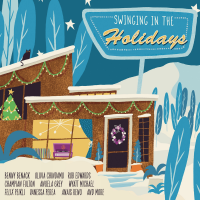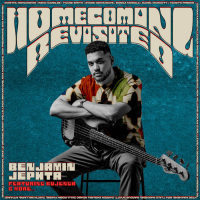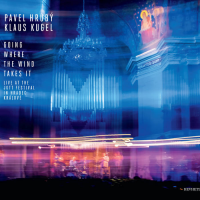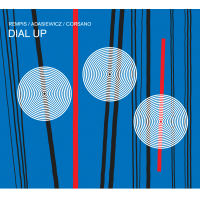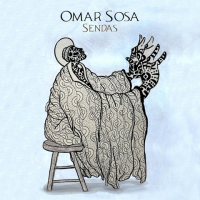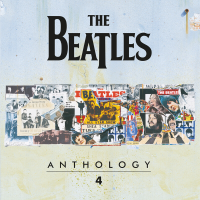Home » Jazz Articles » Album Review » Count Basie: America's #1 Band: The Columbia Years
Count Basie: America's #1 Band: The Columbia Years
In this Year of the Blues, it’s appropriate that Columbia reissue these sessions, which accurately reflect our heritage and how we feel about life in general. After all, good music is there to be felt and experienced. It’s not about sharps and flats and proper phrasing. It’s not about creating a smooth elevator ride, either. Good music, as Count Basie, Lester Young, Clark Terry, Jo Jones and Buddy DeFranco testify, comes from the heart and communicates freely across all boundaries.
Lester Young’s lucid tenor saxophone stands out on much of disc one. His timeless performances provide the spirit that Basie espoused. Don Byas and Buck Clayton also sit in with Basie’s small groups to portray the blues in its purest form. “Sugar Blues” features Clayton with open horn, accompanied by Freddie Green’s rhythm guitar. Byas and Basie take their turns expressing this woeful tale reflecting life in America. Several pieces dig at the core of the pianist’s success, using a quartet format to highlight Basie’s piano magic. The wild west, the deep south, the mighty Mississippi, middle America, and New York City all add their influence to his exotic formula. “St. Louis Blues” dresses the city’s streets with fine linens and fancy tablecloths for an earthy walk through society’s hopeful side.
Disc two begins with eight memorable sessions that match up Clark Terry, Wardell Gray and Buddy DeFranco in Basie’s octet. They provide “One O’Clock Jump” all the intensity that the pianist’s big band has given that familiar tune. The pianist is featured often, and he’s in good company. The addition of a baritone saxophone makes for a full big band sound. Because Rudy Rutherford sets up a nineteenth century, loping wild west foundation for Basie’s lush piano interpretation of “I’ll Remember April,” the octet communicates on more than one level. Big band sessions that feature Lester Young, Helen Humes, and Jimmy Rushing follow, with a graceful air and a blues sentiment. Basie’s piano remains one of the constants throughout the subtle changes in his band’s chemistry.
Discs three and four continue with big band performances that involve changes in personnel. The sound of Basie’s band, however, remains solid throughout. New band members adapt easily to the band’s book; consequently, the Basie sound remains true to its purpose. A relaxed swing and a lively rhythm keeps things going. As Jimmy Rushing sings on “Blue Skies,” alongside the band’s driving force, “Never saw the sun shining so bright; Never saw things going just right.” This was late 1945. The world was seeing things in a new light, and the Basie sound kept that positive message going strong. J.J. Johnson, Illinois Jacquet and Joe Newman gave the band a big lift.
The radio broadcasts, most of which have never been released before, occupy all of disc four. These performances date from 1939 to 1941. Again, the unmistakable Basie sound pervades. And, once again, Lester Young stands out clearly at front row center for nearly all of these sessions. His comfortable tenor solos lend majesty to the band. Helen Humes, Jimmy Rushing and Billie Holiday sing popular selections.
The radio audience of that era loved it, and we’re able to hear the same performances with a clear timbre and no static or interference. Over four hours of that quality Basie sound. Who could ask for anything more?
Track Listing
Shoe Shine Boy; Evenin'; Boogie Woogie (I May Be Wrong); Oh, Lady Be Good; I Ain't Got Nobody; Goin' To Chicago; Live and Love Tonight; Love Me or Leave Me; Dickie's Dream; Lester Leaps In; How Long Blues; Royal Garden Blues; Bugle Blues; Sugar Blues; Farewell Blues; Caf
Personnel
Count Basie
pianoCount Basie- piano, organ; Freddie Green- guitar; Jimmy Lewis, Walter Page, Rodney Richardson- bass; Gus Johnson, Jo Jones, Buddy Rich, Shadow Wilson- drums; Emmett Berry, Buck Clayton, Shad Collins, Harry "Sweets" Edison, Al Killian, Ed Lewis, Bob Mitchell, Bobby Moore, Joe Newman, Al Porcino, Carl "Tatti" Smith, Al Stearns, Clark Terry, Lamar Wright, Snooky Young- trumpet; Leon Comegys, Ed Cuffee, Vic Dickenson, Ted Donnelly, Eddie Durham, Matthew Gee, George Hunt, J.J. Johnson, Dan Minor, George Matthews, Benny Morton, Eli Robinson, Robert Scott, Louis Taylor, Dicky Wells, Booty Wood- trombone; Buddy DeFranco- clarinet; Tab Smith, soprano saxophone, alto saxophone; George Dorsey, Preston Love, Rubin Phillips, Jimmy Powell, Caughey Roberts, Marshall Royal, Earle Warren- alto saxophone; Paul Bascomb, Don Byas, Herschel Evans, Wardell Gray, Coleman Hawkins, Illinois Jacquet, Charlie Rouse, Buddy Tate, Lucky Thompson- tenor saxophone; Lester Young- tenor saxophone, clarinet; Serge Chaloff, Charlie Fowlkes, Jack Washington- baritone saxophone; Rudy Rutherford- baritone saxophone, alto saxophone, clarinet; Billie Holiday, Helen Humes, Jimmy Rushing- vocals.
Album information
Title: America's #1 Band: The Columbia Years | Year Released: 2003 | Record Label: Columbia Records
Tags
PREVIOUS / NEXT
Support All About Jazz
 All About Jazz has been a pillar of jazz since 1995, championing it as an art form and, more importantly, supporting the musicians who make it. Our enduring commitment has made "AAJ" one of the most culturally important websites of its kind, read by hundreds of thousands of fans, musicians and industry figures every month.
All About Jazz has been a pillar of jazz since 1995, championing it as an art form and, more importantly, supporting the musicians who make it. Our enduring commitment has made "AAJ" one of the most culturally important websites of its kind, read by hundreds of thousands of fans, musicians and industry figures every month.














